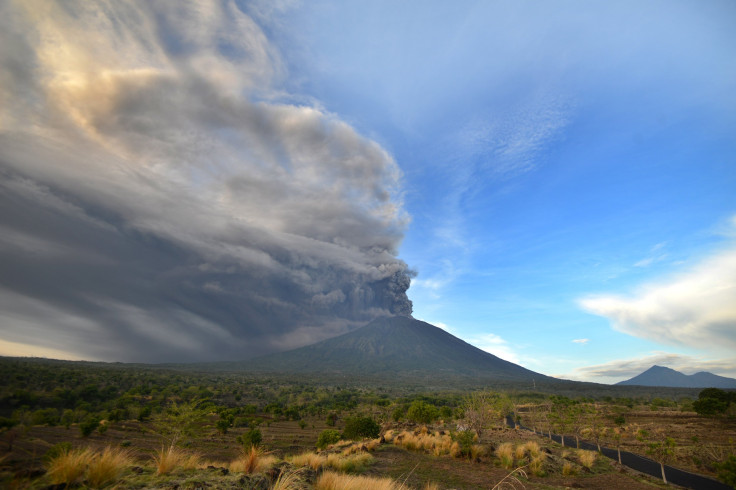Bali Volcano Eruption: Scientists Stay Ready For Potential Big One

The Agung volcano in Indonesia was in the news recently for a recent spike in activity. The 3,000 meter (9842 feet) high, so-called strato-volcano has a history of very violent eruptions like the one in 1963 that killed more than 1,000 people.
Detecting a volcanic eruption is no easy business, and it requires monitoring very small vibrations and tremors on the Earth’s surface.
Seismic activity in and around volcanic regions are measured and any spike in activity is considered an indication of a future eruption.
“There’s no instrument in the world that can estimate precisely when there will be a major eruption,” said volcanologist Devy Kamil Syahbana in a report by Reuters.
“People expect certainty but volcanology is a science of probability,” said Syahbana, who runs an observatory monitoring the towering volcano, just outside a 10-km (6.21 miles) exclusion zone.
Since a spike in activity in November, authorities were on high alert. When the volcano started spewing out ash over the island, the Bali airport was shut down for three days.
Thousands of residents fled from their homes on the mountain’s slopes, said the report. In late November, Indonesia Minister of Tourism Arief Yahya led a meeting of the Crisis Centre Team to discuss the situation.
The exclusion zone around the volcano still extends 10 kilometers from the crater and more than 55,000 who used to live in and around the area now live in shelters. Syahbana said safety was his priority and he didn't mind if raising the alert level had spooked residents and tourists alike.
“The difference between other volcanoes and Mount Agung is that there are no scientific records about previous eruptions here, only people’s experiences,” Syahbana said. In 1963, pyroclastic flows and rocks poured out of the volcano, killing more than 1,000 people and razing dozens of villages.
Crazy footage of #GunungAgung volcano erupting on #Bali today. Stay safe my Bali peeps. pic.twitter.com/Do9Qnf5yyn
— Matt Ooley (@mattooley) November 26, 2017
In the past month, social media was flooded with pictures and other updates about the volcano.
Erupsi Gunung Agung masih terus berlangsung. Status Gunung Agung Level IV (Awas). pic.twitter.com/oVqX0Ssizl
— MAGMA Indonesia (@id_magma) November 27, 2017
"The threat from the eruption isn’t lava flows. In an explosive eruption such as this, it is the ash fall and the potential for ash to mix with rainfall to create volcanic mudflows that is the real danger,” volcano expert Erik Klemmeti said in an Evening Standard report.
Ash falling onto the area near the volcano is causing a severe breathing hazard for people living near Agung, and people were asked to wear proper breathing protection and they will likely need to protect crops and livestock as best as they can.
"If the ash fall becomes heavier, then it could become a danger to roofs as ash might seem like snow, but is 2-3 times more dense. However, at this point, the eruption isn’t intense enough to lead to that worry," he added.
With airports on the island functioning normally now, panic level has come down for now. However, experts said the warning levels still points to a lot of potential harm and people should be on constant high alert.
© Copyright IBTimes 2024. All rights reserved.





















